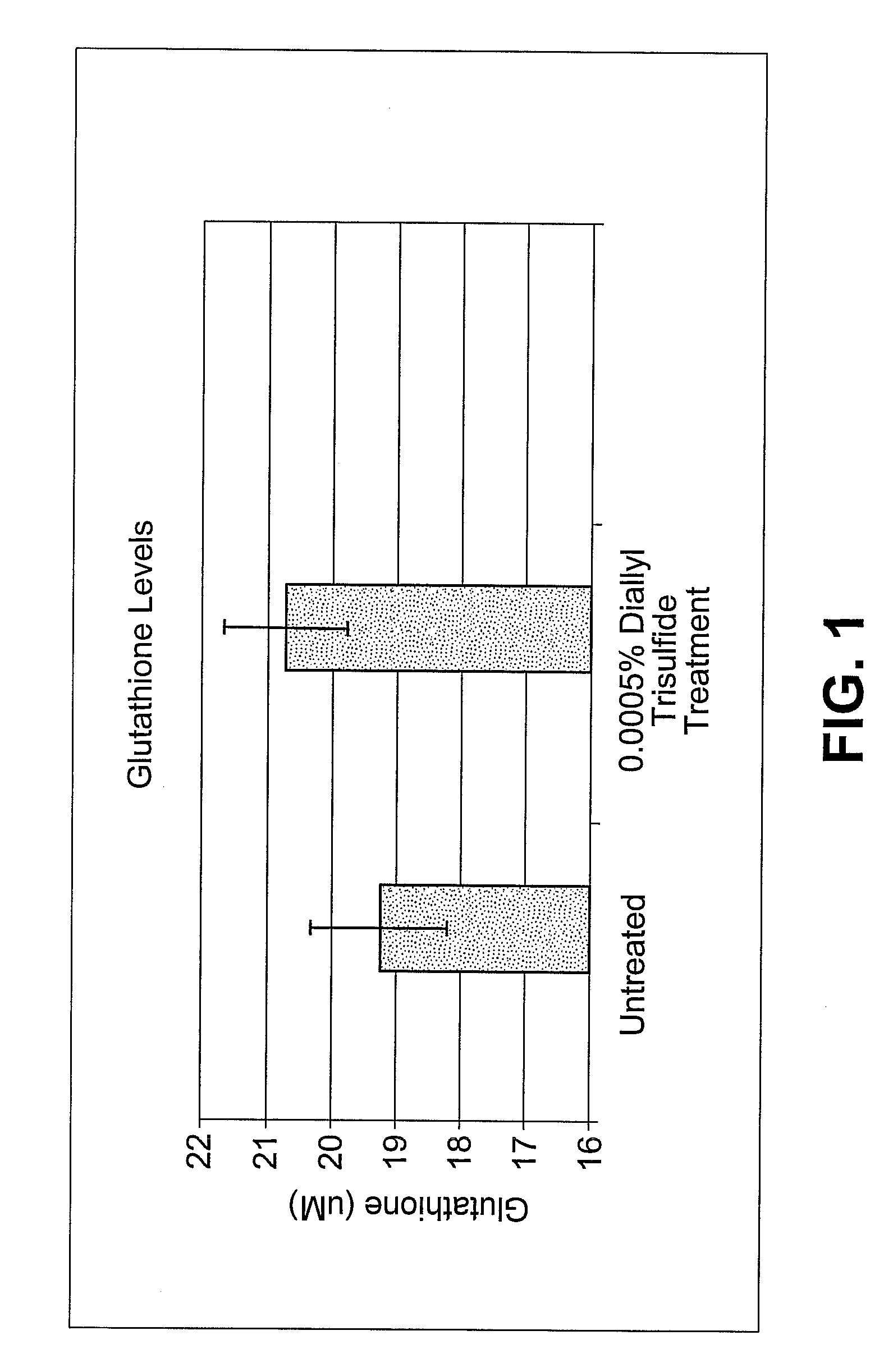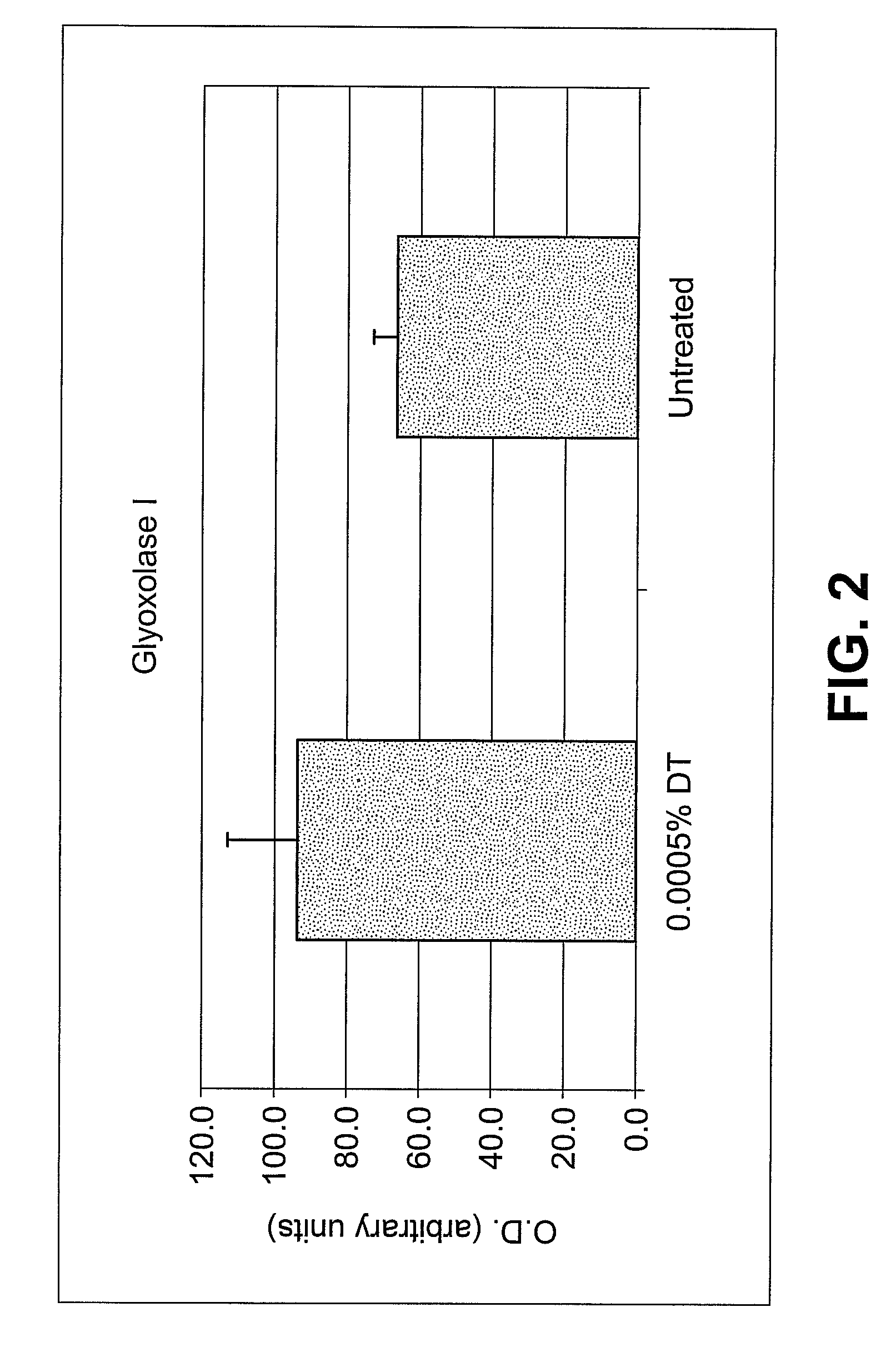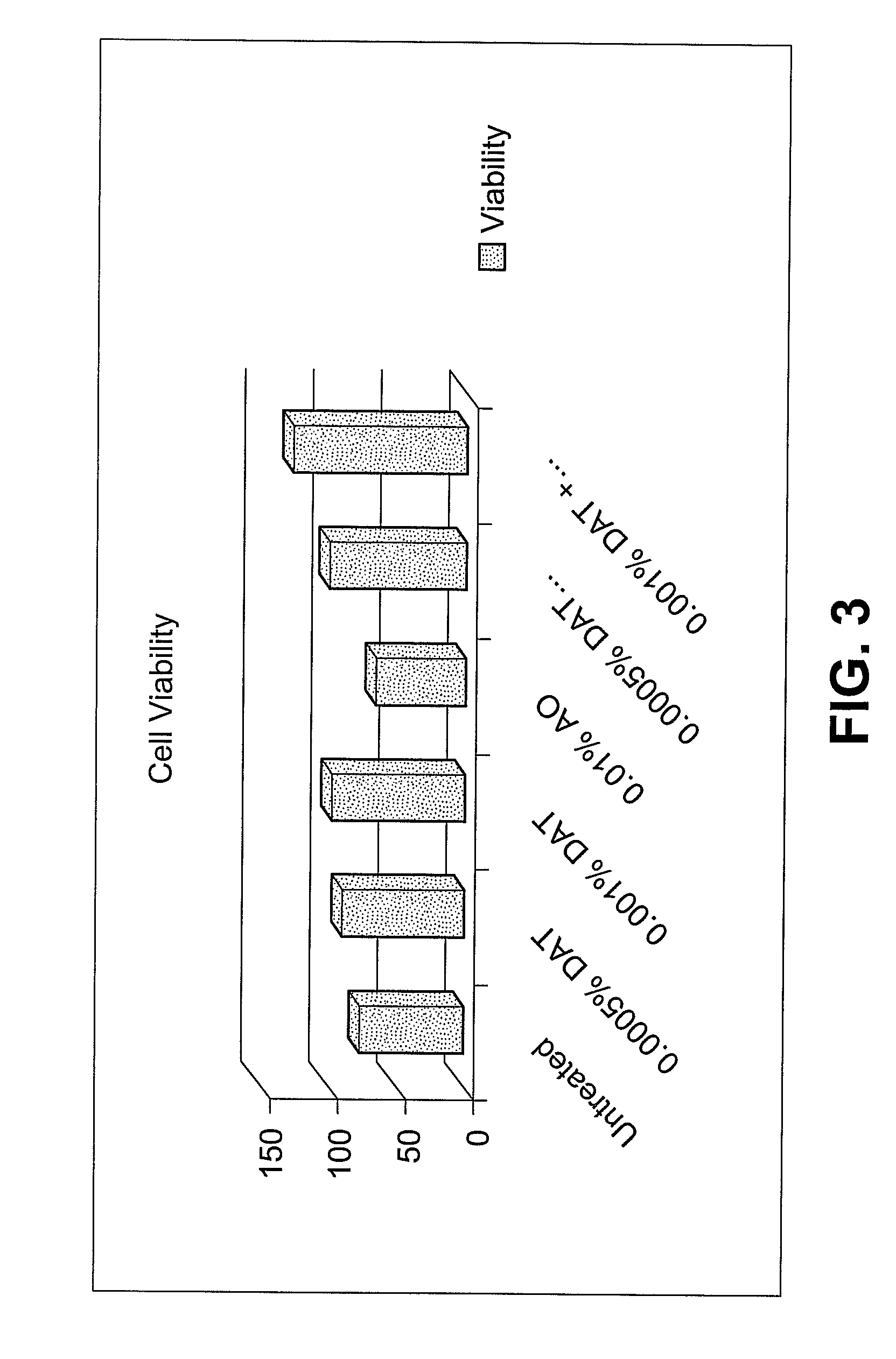Topical use of plant extract for skin detoxification
a technology of plant extract and skin detoxification, which is applied in the field of topical application of plant extract, can solve the problems of skin sagging and wrinkles, cosmetic claims are often overstated, and the skin is not able to deal with these damaging insults, so as to maintain cellular redox homeostasis and reduce hydrogen peroxide and alkylhydroperoxid
- Summary
- Abstract
- Description
- Claims
- Application Information
AI Technical Summary
Benefits of technology
Problems solved by technology
Method used
Image
Examples
example 1
Results of DNA Microarray
Summary of Test Method
[0016]DNA microarrays are extremely powerful tools that allow users to analyze changes in gene expression by monitoring the RNA products of thousands of genes in a single experiment. Microarrays come in many forms, however the most popular form are comprised of glass microscope slides which have been studded with a large number of DNA fragments, also called features, with each feature containing a nucleotide sequence that corresponds to a single specific gene. DNA microarrays are commonly used to compare treated and untreated cells / tissue to determine what changes in gene expression occur with the treatment.
[0017]The first step in the microarray process is to decide on which cell or tissue type to use as the model. For example, if one wishes to look at the effect of a material on keratinocyte gene expression then one can use a keratinocyte cell culture model (keratinocytes grown in a monolayer), or a keratinocyte culture. In the first ...
example 2
ELISA Quantification of Glutathione
[0022]In simple terms, in ELISA an unknown amount of antigen is affixed to a surface, and then a specific antibody is washed over the surface so that it can bind to the antigen. In this case, an ELISA was performed to quantify the amount of glutathione expressed in keratinocyte culture in a controlled culture as well as after 24 hrs treatment with 0.0005% dially trisulfide. This antibody is linked to an enzyme, and in the final step a substance is added that the enzyme can convert to some detectable signal. Thus in the case of fluorescence ELISA, when light is shone upon the sample, any antigen / antibody complexes will fluoresce so that the amount of antigen in the sample can be measured.
[0023]The ELISA kit used in this experiment was purchased from Cayman Chemicals. The experiment was performed as per the manufacturer's directions. The results are shown in the following table and graphed in FIG. 1:
48 hoursTreatmentGlutGlutGlutTreatmentabs 1abs 2ab...
example 3
Quantification of Glyoxalase I Via Immunoassay
[0024]To quantify the amount of glyoxalase I which was upregulated vs. a control sample, a keratinocyte culture was treated for 24 hrs, lysed, and western blotted vs. an untreated control sample. The blots were then transferred and probed with a fluorescent anti-body to glyoxalse I, purchased from Santa Cruz Biotechnology. Absorbance was measured and graphed. Results are shown in the following tables and graphed in FIG. 2:
TreatmentOD1OD 2OD 3OD4OD 5OD 60.0005%125.205126.011145.641 87.372123.78130.525DTUntreated153.701152.977158.406149.661147.67139.384InvInvInvInvInvInvOD 1OD 2OD 3OD 4OD 5OD 6MeanStdev91.690.771.1129.493.086.293.719.3* significantlydifferent fromUntreated63.163.858.4 67.169.177.466.5 6.5
PUM
| Property | Measurement | Unit |
|---|---|---|
| Hydrophobicity | aaaaa | aaaaa |
Abstract
Description
Claims
Application Information
 Login to View More
Login to View More - R&D
- Intellectual Property
- Life Sciences
- Materials
- Tech Scout
- Unparalleled Data Quality
- Higher Quality Content
- 60% Fewer Hallucinations
Browse by: Latest US Patents, China's latest patents, Technical Efficacy Thesaurus, Application Domain, Technology Topic, Popular Technical Reports.
© 2025 PatSnap. All rights reserved.Legal|Privacy policy|Modern Slavery Act Transparency Statement|Sitemap|About US| Contact US: help@patsnap.com



